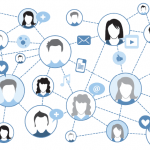It was nine o’clock on a Tuesday morning in June 2008. Lee A. Aase, manager of media relations at the Mayo Clinic in Rochester, Minn., learned of a study involving one of Mayo’s endocrinologists, Victor Montori, MD, that was going to be published that afternoon in the Journal of the American Medical Association.
At 10:20 am, Aase began videotaping an interview with Dr. Montori about the study. By noon, the video was posted on Mayo’s YouTube channel, embedded in its news blog, and e-mailed to journalists. The following day, the Wall Street Journal health blog embedded the video within its story.
After several years of experimenting with social media as a vehicle for disseminating healthcare information, Mayo launched the Center for Social Media in July 2010. Its mission was to expand social media from a public relations and marketing application to a robust communication tool for patient care, research, and education. Since then, the center has surpassed its original goal, evolving into a social media expert for healthcare providers nationwide.
“Our use of social media was an outgrowth of our media relations work,” says Aase, now director of the center.
With 10 employees, the center places content in the path of the interested public. Hundreds of videos showcase physicians offering generic information about diseases or effective treatments or patients discussing their medical condition and inpatient experiences at Mayo.
Everyone seems to benefit. Sharing information is therapeutic for some patients. Online visitors receive updated, accurate information. Even physicians are pleased because their videotaped quotes are never inaccurate or misleading.
“One of the things frustrating for physicians is quotes taken out of context,” he says. “We use flip video cameras and iPhone cameras as a way of capturing the expertise of our physicians instead of hassling them to write blogs for us. It’s relatively painless.”
Keep It Real
Although the center has editorial discretion, Aase says all videos are posted on YouTube in their entirety, creating an authentic viewer experience. Comments are never edited. The same holds true for negative comments posted on Facebook or Twitter.
“If there weren’t negative comments on our Facebook page, then people would say it’s a whitewash, that we’re stripping out all the negative stuff,” says Aase.
Facebook and Twitter are monitored by employees for 12 hours each weekday. On weekends, employees rotate, checking postings several times throughout the day. Although the center encourages visitors to express their opinions, it prevents them from monopolizing Mayo’s Facebook page, he says, adding that most patient issues blow over in a day or two. Developing a long-range perspective is a key part of the center’s strategy.
